In today’s competitive digital landscape, effective email marketing is paramount for businesses aiming to engage their audience, nurture leads, and drive conversions. Selecting the right marketing automation platform can significantly influence the success of these efforts. Two prominent contenders in this arena are Oracle Eloqua and Salesforce Pardot. Both platforms offer robust features tailored to streamline marketing processes and enhance engagement, but each has its unique strengths and ideal use cases.
As businesses increasingly adopt data-driven marketing strategies, the choice between Oracle Eloqua and Pardot becomes crucial. Additionally, innovative solutions like Prism Reach are emerging to complement these platforms, offering specialized tools for deep personalization in email marketing. This article delves into a comprehensive comparison of Oracle Eloqua and Pardot, integrating lesser-known strategies that can elevate your marketing effectiveness and exploring how Prism Reach can enhance your email campaigns.
Key Facts
- Oracle Eloqua is designed for large enterprises with complex marketing needs, offering extensive customization options.
- Salesforce Pardot provides seamless integration with Salesforce CRM and is renowned for its user-friendly interface.
- Both platforms feature advanced capabilities such as AI-powered analytics, lead scoring, and multi-channel campaign management.
- Prism Reach is an AI-powered SaaS solution focused on enhancing email marketing through deep personalization.
- Prism Reach complements Eloqua and Pardot by offering sophisticated tools for content personalization and subscriber engagement.
Unveiling the Power Players: Oracle Eloqua and Salesforce Pardot
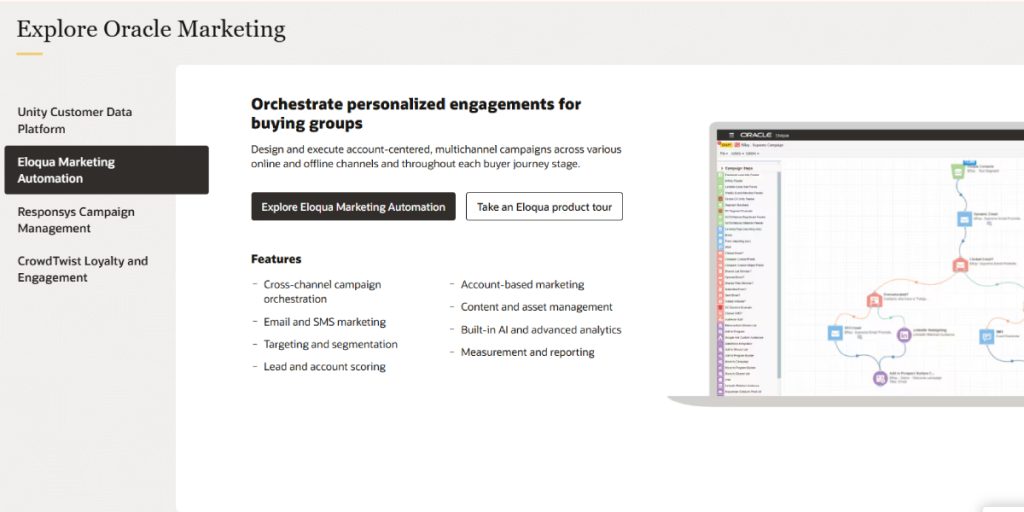
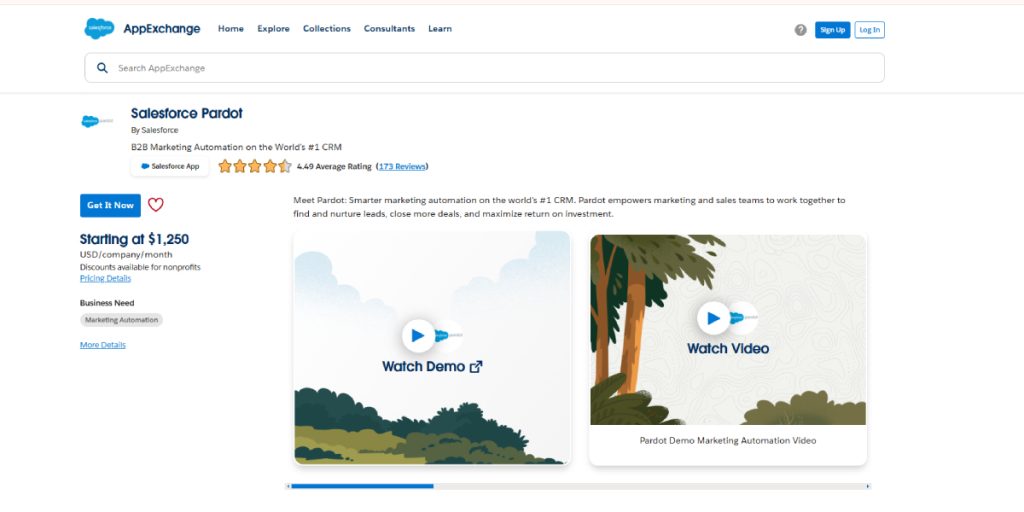
Campaign Management and Automation
Effective campaign management and automation are at the heart of any successful marketing strategy. Oracle Eloqua’s Campaign Canvas stands out with its sophisticated drag-and-drop interface, enabling marketers to design complex, multichannel campaigns with ease. The platform’s Program Builder allows for the creation of reusable campaign templates and automates repetitive marketing tasks, making it ideal for large enterprises with intricate marketing needs.
On the other hand, Salesforce Pardot offers the Engagement Studio, a visual tool designed for building and testing engagement programs. This feature is especially valuable for businesses already integrated into the Salesforce ecosystem, providing seamless real-time data synchronization with Salesforce CRM. While Eloqua excels in handling complex, enterprise-level workflows, Pardot focuses on integration and ease of use within the Salesforce environment.
Hidden Gem #2: Multi-Step Campaigns
Both Eloqua and Pardot support multi-step campaigns, but leveraging this feature effectively can significantly enhance campaign relevance and conversion rates. In Eloqua, multi-step campaigns allow for adaptive marketing flows that respond to real-time user actions, ensuring timely and relevant follow-ups based on user interactions.
Lead Management and Scoring
In the realm of lead management, both Oracle Eloqua and Salesforce Pardot offer robust solutions, each with distinct approaches. Eloqua implements sophisticated lead scoring models that prioritize prospects based on various behaviors and attributes. This advanced scoring system is particularly beneficial for businesses with complex sales cycles and diverse lead types.
Pardot, conversely, combines lead scoring with grading, offering a more comprehensive view of lead quality by considering both engagement levels and demographic fit. This dual approach provides a detailed picture of lead potential, which is especially useful for businesses with varied product lines or target markets.
Hidden Gem #3: Advanced Lead Scoring Models
Implementing advanced lead scoring models in Pardot can factor in both behavioral and demographic data, enabling more nuanced lead prioritization. Similarly, Eloqua’s lead scoring can be customized to align with specific business criteria, ensuring that sales teams focus on the most promising leads and improving conversion rates.
User Interface and Ease of Use
User interface and overall ease of use are critical factors that influence the adoption and effectiveness of marketing automation platforms. Salesforce Pardot generally receives higher marks for its intuitive and user-friendly interface, making it easier for marketing teams to adapt quickly without extensive training. This ease of use is a crucial advantage for businesses looking to implement marketing automation swiftly.
Oracle Eloqua, while offering powerful and comprehensive features, is noted for having a steeper learning curve. The complexity in Eloqua’s interface can be challenging, especially for smaller teams or organizations new to marketing automation. However, this complexity comes with the benefit of extensive customization and control, which can be invaluable for large enterprises with specific marketing requirements.
Hidden Gem #4: Engagement Studio Automation
Pardot’s Engagement Studio allows for the creation of complex, branching nurture campaigns that adapt based on user responses. This capability helps maintain engagement over longer sales cycles by delivering relevant content at each stage, enhancing the overall user experience.
Analytics and Reporting Capabilities
Both Oracle Eloqua and Salesforce Pardot offer robust analytics and reporting capabilities, each with its unique strengths. Eloqua’s advanced attribution modeling provides deep insights into campaign performance across multiple touchpoints, making it ideal for businesses running complex, multi-channel marketing campaigns.
Pardot leverages Salesforce’s Einstein AI technology to offer predictive analytics, which can be particularly useful for sales forecasting and lead prioritization. The AI-driven insights in Pardot help businesses make informed decisions about their marketing and sales strategies, enhancing overall effectiveness.
Hidden Gem #5: Comprehensive Reporting Dashboards
Both platforms offer customizable reporting dashboards that track campaign performance metrics effectively. Eloqua’s dashboards are highly detailed, allowing for in-depth analysis of various performance indicators. Pardot’s dashboards, enhanced by AI, provide predictive insights that can guide strategic decision-making.
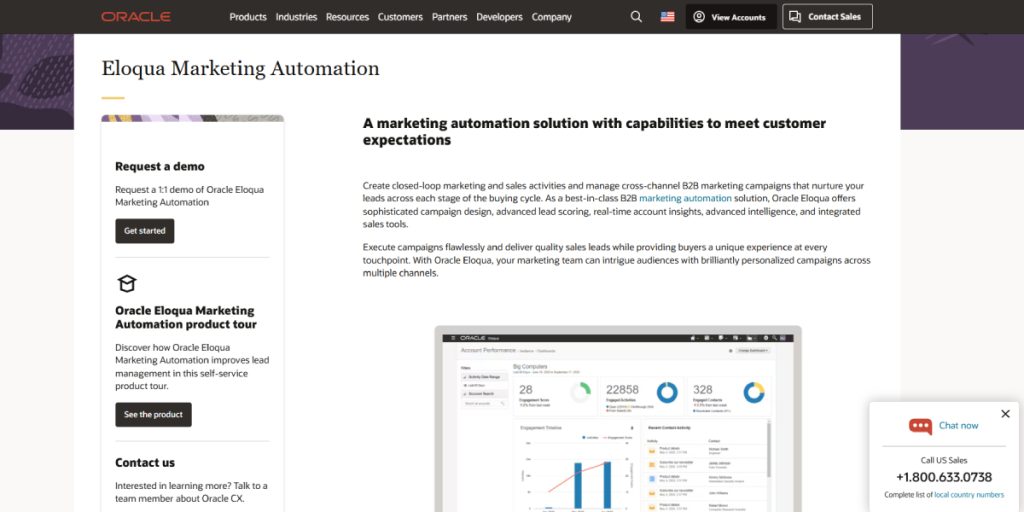
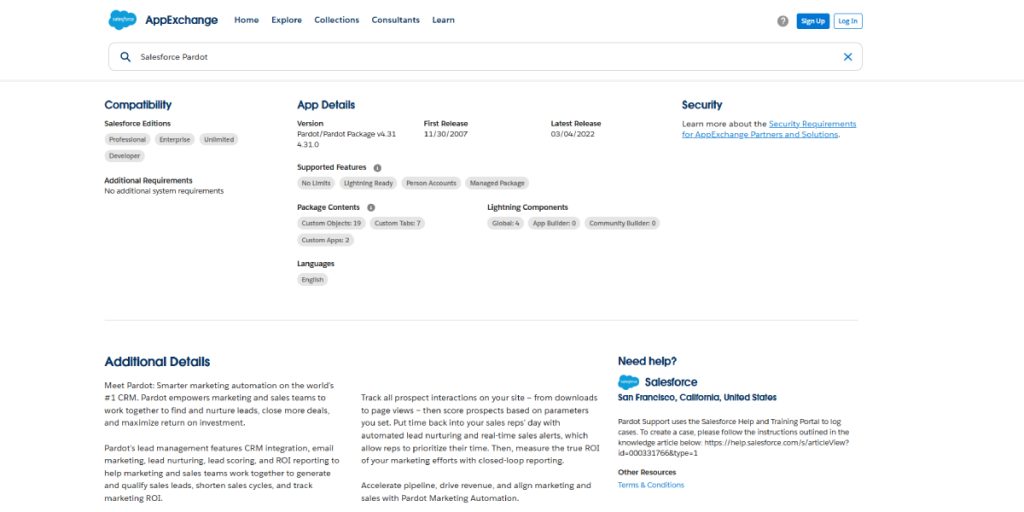
Pricing and Target Market
Pricing structure is a crucial differentiator between Oracle Eloqua and Salesforce Pardot, reflecting their target markets. Eloqua’s premium pricing is clearly aimed at larger enterprises with substantial marketing budgets and complex needs. This pricing model often includes more customization options and advanced features suited for large-scale operations.
In contrast, Pardot offers a tiered pricing structure, making it more accessible to businesses of various sizes. This approach is particularly attractive for small to medium-sized businesses or those beginning their journey with marketing automation. The tiered pricing allows companies to start with basic features and scale up as their needs grow, making Pardot a more viable option for a broader range of businesses, especially those conscious of initial investment costs in marketing technology.
Additionally, Pardot’s focus on integration with Salesforce CRM provides added value for businesses already using Salesforce, enhancing the overall ROI by streamlining data flow and improving sales and marketing alignment.
Innovative Solutions by Prism Reach
While Oracle Eloqua and Salesforce Pardot dominate the marketing automation landscape, innovative solutions like Prism Reach are emerging to address specific needs in email marketing personalization. Prism Reach’s AI-powered platform offers a unique approach to enhancing email campaign effectiveness through deep personalization.
Benefits of Prism Reach:
- Increased Engagement: Publishers report up to 40% higher engagement rates due to the personalized nature of the content.
- Higher Revenue: Tailored advertising and efficient content targeting lead to higher monetization rates for published newsletters.
- Improved Productivity: Automation and AI-driven insights significantly reduce the time required to create and manage campaigns.
Prism Reach’s core functionality revolves around its proprietary AI technology, which clusters website content and social media posts into relevant categories. This AI creates detailed user avatars, enabling personalized newsletter content that incorporates factors such as location, engagement history, and predicted interests. The system’s ability to analyze vast amounts of data allows for highly targeted marketing strategies, complementing the broader automation capabilities of Eloqua and Pardot.
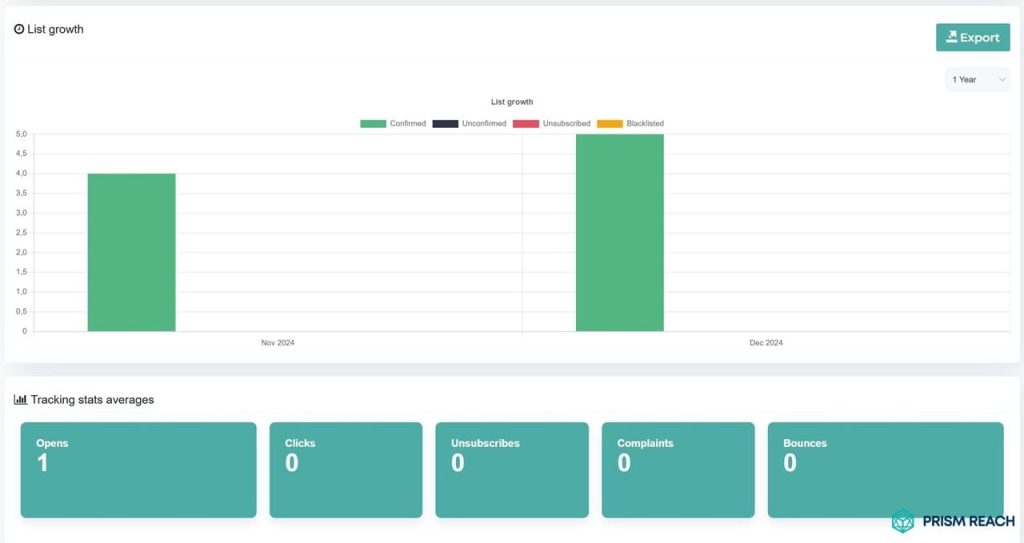
Integrating Hidden Gems into Your Strategy
To maximize the effectiveness of Oracle Eloqua or Pardot, integrating lesser-known strategies can provide significant advantages. Here are five hidden gems that can enhance your email marketing efforts:
- Dynamic Content Personalization: Tailor emails and landing pages based on user behavior and preferences to create highly personalized experiences, increasing engagement rates.
- Multi-Step Campaigns: Create adaptive marketing flows that respond to real-time user actions, ensuring timely and relevant follow-ups.
- Advanced Lead Scoring Models: Factor in both behavioral and demographic data for more nuanced lead prioritization, helping sales teams focus on the most promising leads.
- Engagement Studio Automation: Develop complex, branching nurture campaigns that adapt based on user responses, maintaining engagement over longer sales cycles.
- Comprehensive Reporting Dashboards: Utilize customizable dashboards to track campaign performance metrics effectively, providing actionable insights for continuous optimization.
Implementing these strategies within Oracle Eloqua or Pardot can significantly enhance marketing effectiveness. For instance, combining Eloqua’s advanced lead scoring with Prism Reach’s personalized content recommendations can create a powerful synergy, driving higher conversion rates and fostering stronger customer relationships.
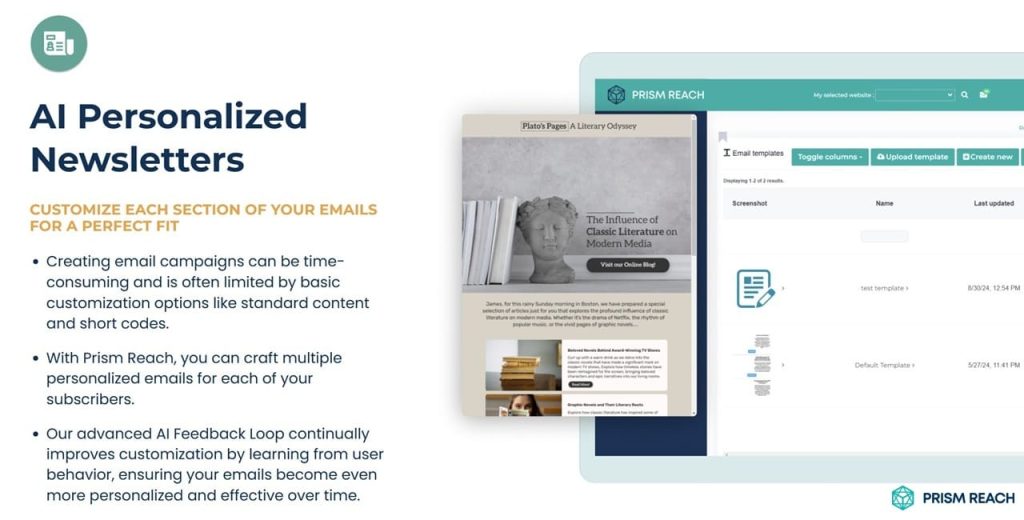
Practical Tips for Maximizing Your Marketing Automation
To fully leverage the capabilities of Oracle Eloqua, Pardot, and Prism Reach, consider the following practical tips:
- Leverage AI-Powered Personalization: Use Prism Reach’s AI-driven content recommendations to enhance the personalization features in Eloqua and Pardot, ensuring that each subscriber receives content that resonates with their preferences.
- Optimize Send Times: Utilize Prism Reach’s predictive analytics to determine the optimal times to send newsletters, maximizing subscriber engagement and open rates.
- Automate Workflow Processes: Implement Eloqua’s Campaign Canvas or Pardot’s Engagement Studio to automate complex workflows, reducing manual effort and ensuring timely communication with leads.
- Integrate Comprehensive Reporting: Combine the reporting capabilities of Eloqua or Pardot with Prism Reach’s detailed engagement metrics to gain a holistic view of campaign performance and make data-driven decisions.
- Enhance Lead Qualification: Use advanced lead scoring models in Pardot alongside Prism Reach’s user avatars to prioritize high-potential leads, improving sales efficiency and conversion rates.
By integrating these tips into your marketing strategy, you can create a more cohesive and effective approach that leverages the strengths of each platform and tool, ultimately driving better results and higher ROI.
Upgrade Your Email Marketing with AI Personalization!
Conclusion
The decision between Oracle Eloqua and Salesforce Pardot hinges on your business’s specific needs, existing tech infrastructure, and marketing complexity. Eloqua shines in complex enterprise environments where extensive customization and sophisticated campaign management are required. Its advanced features and comprehensive reporting make it ideal for large organizations with intricate marketing workflows.
Conversely, Pardot excels with its seamless integration with Salesforce CRM and its user-friendly interface, making it an excellent choice for businesses already invested in the Salesforce ecosystem or those prioritizing ease of use and quick implementation.
Additionally, innovative solutions like Prism Reach offer valuable enhancements to your email marketing efforts through deep personalization and AI-driven insights. By leveraging Prism Reach alongside Eloqua or Pardot, businesses can achieve higher engagement rates, increased revenue, and improved productivity.
Ultimately, the best choice depends on evaluating your specific business requirements, budget constraints, and long-term marketing goals. By carefully assessing these factors and exploring complementary tools like Prism Reach, you can build a marketing technology stack that best serves your unique needs and drives sustained growth.
Sources
- LeadFabric. (2024). Top Five Features Eloqua vs Pardot. Retrieved from https://resources.leadfabric.com/eloqua/top-five-features-eloqua-vs-pardot
- GetCensus. (2024, August 31). Pardot vs. Oracle Eloqua: Comprehensive Comparison for B2B Marketing Success. Retrieved from https://www.getcensus.com/blog/pardot-vs-oracle-eloqua-comparison-b2b-marketing
- PeerSpot. (2024, October). Oracle Eloqua vs Pardot Comparison 2024. Retrieved from https://www.peerspot.com/products/comparisons/oracle-eloqua_vs_pardot
- Marketing Automation Insider. (2023, July 27). Oracle Eloqua vs Salesforce Marketing Cloud (Pardot). Retrieved from https://www.marketingautomationinsider.com/oracle-eloqua-vs-pardot/
- SoftwareSuggest. (2024, October). Compare Pardot vs Oracle Eloqua. Retrieved from https://www.softwaresuggest.com/compare/pardot-vs-oracle-eloqua